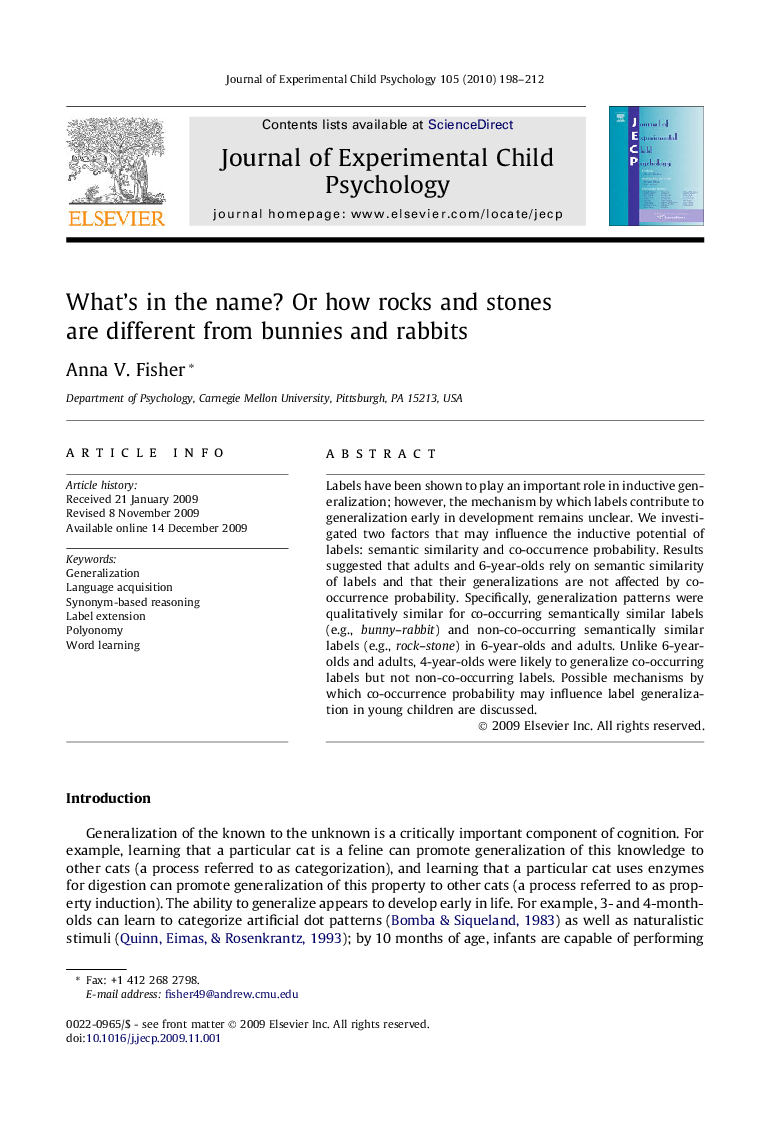| Article ID | Journal | Published Year | Pages | File Type |
|---|---|---|---|---|
| 918622 | Journal of Experimental Child Psychology | 2010 | 15 Pages |
Labels have been shown to play an important role in inductive generalization; however, the mechanism by which labels contribute to generalization early in development remains unclear. We investigated two factors that may influence the inductive potential of labels: semantic similarity and co-occurrence probability. Results suggested that adults and 6-year-olds rely on semantic similarity of labels and that their generalizations are not affected by co-occurrence probability. Specifically, generalization patterns were qualitatively similar for co-occurring semantically similar labels (e.g., bunny–rabbit) and non-co-occurring semantically similar labels (e.g., rock–stone) in 6-year-olds and adults. Unlike 6-year-olds and adults, 4-year-olds were likely to generalize co-occurring labels but not non-co-occurring labels. Possible mechanisms by which co-occurrence probability may influence label generalization in young children are discussed.
